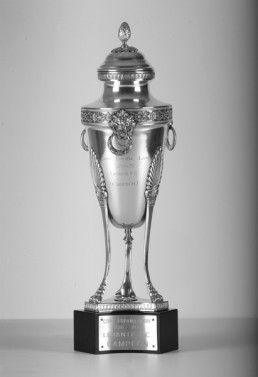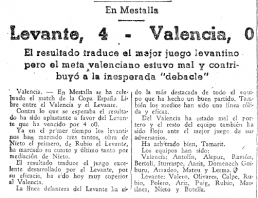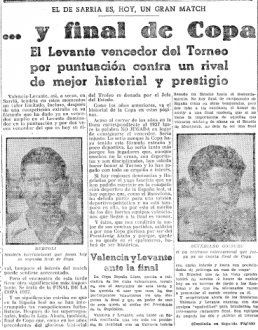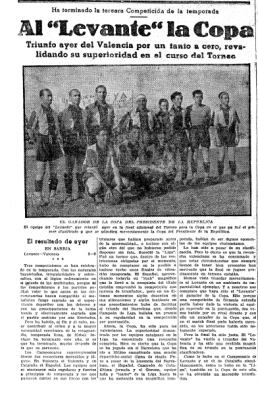The first references to the Copa España Libre date from the spring of 1937. The war altered the evolution of the already institutionalised competitions. In May 1937, it was decided to extend the chronological sequence of the competition with the creation of a new tournament, similar to the Spanish Championship, which would form part of the story comprising the Super-regional Championship and the Mediterranean League. The challenge for Spain loyal to the Republic was to maintain the competitive sequence of the previous years.
Rodríguez Tortajada, president of Valencia, was the driving force behind a project that had the approval of Ricardo Cabot and the National Federation. “Cabot is interested in the competition being held and to this end he plans to give it an official character that could replace the famous and traditional Spanish Cup,” assured Rodríguez Tortajada in Mundo Deportivo.
The President of the Republic gave a nod to his officialdom by presenting the trophy to the winner. However, a number of constraints had to be overcome. The composition of the tournament was the main problem, given the degree of difficulty. The idea was to bring together the two best-ranked clubs in the Valencian and Catalan Regional Championships. This was not possible. Barcelona had left for Mexico and Hércules, the Valencian runners-up, resigned due to the impossibility of taking part in any competition. Their internal situation was complex.
Gerona replaced Barcelona and Levante replaced Hercules. Together with Espanyol and Valencia, they would make up the list of entities that would fight in an unusual format.
El Mercantil, El Mundo Deportivo, La Vanguardia offered hints about the format. The four teams would be paired in a regular league as an initial phase. The first and second placed teams would face the Final on neutral territory. However, Levante refused to get involved in the project, but eventually did so in agreement with Gimnástico. Some of the players who took part in the matches were from the ranks of the dean’s team.
The home games were played at Vallejo’s home ground. The superiority of the navy squad was an indisputable characteristic from practically the beginning of the tournament. The draw against Gerona in the Alboraya street coliseum was a mere accident. Victories over Valencia at Mestalla and against the mighty Espanyol at home dignified their ascendancy in the table. The second half of the season followed an even pattern.
The draw in Gerona was matched by another win against the Mestalla side that guaranteed their status as finalists. The defeat in Sarrià against Espanyol was an anecdote. The match that culminated the feat challenged the strengths of Valencia and Levante on Catalan soil. Sarrià was the venue chosen for the final match. The confrontation was scheduled for Sunday 18 July. It was a day full of symbolism. A goal by Nieto settled the contest for the Levante side (1-0). The Copa España Libre was owned by Levante F.C.



